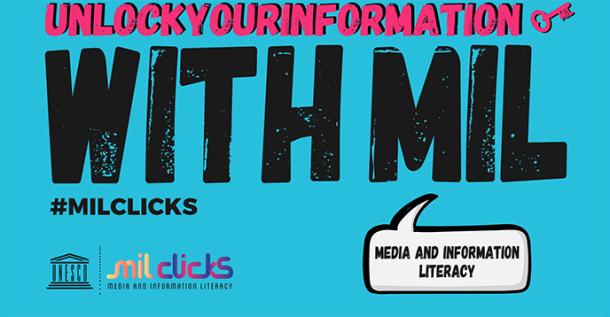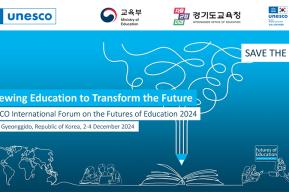News
Media and Information Literacy, a critical approach to literacy in the digital world

What does it mean to be literate in the 21st century? On the celebration of the International Literacy Day (8 September), people’s attention is drawn to the kind of literacy skills we need to navigate the increasingly digitally mediated societies.
Stakeholders around the world are gradually embracing an expanded definition for literacy, going beyond the ability to write, read and understand words. Media and Information Literacy (MIL) emphasizes a critical approach to literacy. MIL recognizes that people are learning in the classroom as well as outside of the classroom through information, media and technological platforms. It enables people to question critically what they have read, heard and learned.
As a composite concept proposed by UNESCO in 2007, MIL covers all competencies related to information literacy and media literacy that also include digital or technological literacy. Ms Irina Bokova, Director-General of UNESCO has reiterated significance of MIL in this media and information landscape: “Media and information literacy has never been so vital, to build trust in information and knowledge at a time when notions of ‘truth’ have been challenged.”
MIL focuses on different and intersecting competencies to transform people’s interaction with information and learning environments online and offline. MIL includes competencies to search, critically evaluate, use and contribute information and media content wisely; knowledge of how to manage one’s rights online; understanding how to combat online hate speech and cyberbullying; understanding of the ethical issues surrounding the access and use of information; and engagement with media and ICTs to promote equality, free expression and tolerance, intercultural/interreligious dialogue, peace, etc. MIL is a nexus of human rights of which literacy is a primary right.
Learning through social media
In today’s 21st century societies, it is necessary that all peoples acquire MIL competencies (knowledge, skills and attitude). Media and Information Literacy is for all, it is an integral part of education for all. Yet we cannot neglect to recognize that children and youth are at the heart of this need. Data shows that 70% of young people around the world are online. This means that the Internet, and social media in particular, should be seen as an opportunity for learning and can be used as a tool for the new forms of literacy.
The Policy Brief by UNESCO Institute for Information Technologies in Education, “Social Media for Learning by Means of ICT” underlines this potential of social media to “engage students on immediate and contextual concerns, such as current events, social activities and prospective employment.
UNESCO MIL CLICKS - To think critically and click wisely
For this reason, UNESCO initiated a social media innovation on Media and Information Literacy, MIL CLICKS (Media and Information Literacy: Critical-thinking, Creativity, Literacy, Intercultural, Citizenship, Knowledge and Sustainability).
MIL CLICKS is a way for people to acquire MIL competencies in their normal, day-to-day use of the Internet and social media. To think critically and click wisely. This is an unstructured approach, non-formal way of learning, using organic methods in an online environment of play, connecting and socializing.
MIL as a tool for sustainable development
In the global, sustainable context, MIL competencies are indispensable to the critical understanding and engagement in development of democratic participation, sustainable societies, building trust in media, good governance and peacebuilding. A recent UNESCO publication described the high relevance of MIL for the Sustainable Development Goals (SDGs).
“Citizen's engagement in open development in connection with the SDGs are mediated by media and information providers including those on the Internet, as well as by their level of media and information literacy. It is on this basis that UNESCO, as part of its comprehensive MIL programme, has set up a MOOC on MIL,” says Alton Grizzle, UNESCO Programme Specialist.
UNESCO’s comprehensive MIL programme
UNESCO has been continuously developing MIL programme that has many aspects. MIL policies and strategies are needed and should be dovetailed with existing education, media, ICT, information, youth and culture policies.
The first step on this road from policy to action is to increase the number of MIL teachers and educators in formal and non-formal educational setting. This is why UNESCO has prepared a model Media and Information Literacy Curriculum for Teachers, which has been designed in an international context, through an all-inclusive, non-prescriptive approach and with adaptation in mind.
The mass media and information intermediaries can all assist in ensuring the permanence of MIL issues in the public. They can also highly contribute to all citizens in receiving information and media competencies. Guideline for Broadcasters on Promoting User-generated Content and Media and Information Literacy, prepared by UNESCO and the Commonwealth Broadcasting Association offers some insight in this direction.
UNESCO will be highlighting the need to build bridges between learning in the classroom and learning outside of the classroom through MIL at the Global MIL Week 2017. Global MIL Week will be celebrated globally from 25 October to 5 November 2017 under the theme: “Media and Information Literacy in Critical Times: Re-imagining Ways of Learning and Information Environments”. The Global MIL Feature Conference will be held in Jamaica under the same theme from 24 to 27 October 2017, at the Jamaica Conference Centre in Kingston, hosted by The University of the West Indies (UWI).
Contact:
Alton Grizzle, Programme Specialist – Media Development and Society Section







